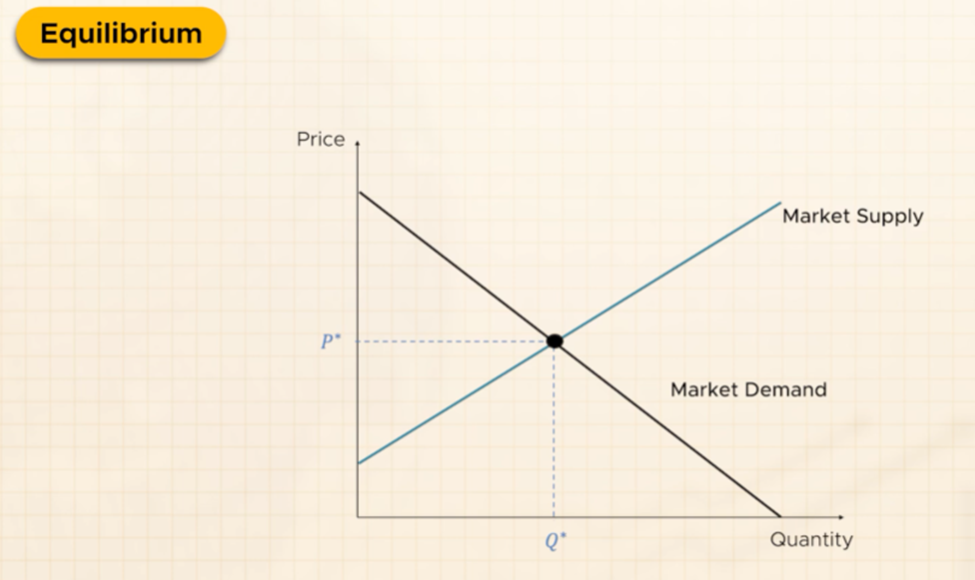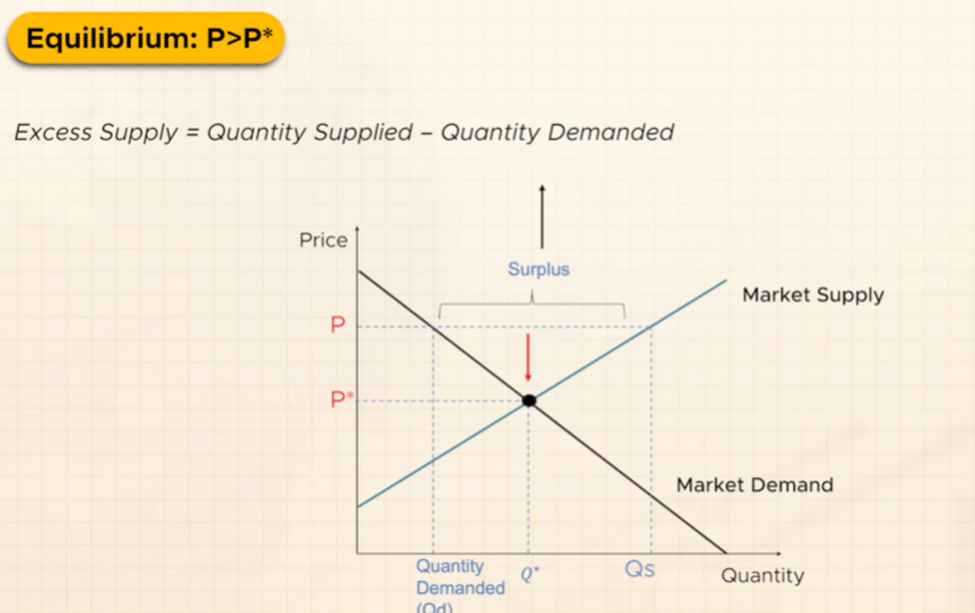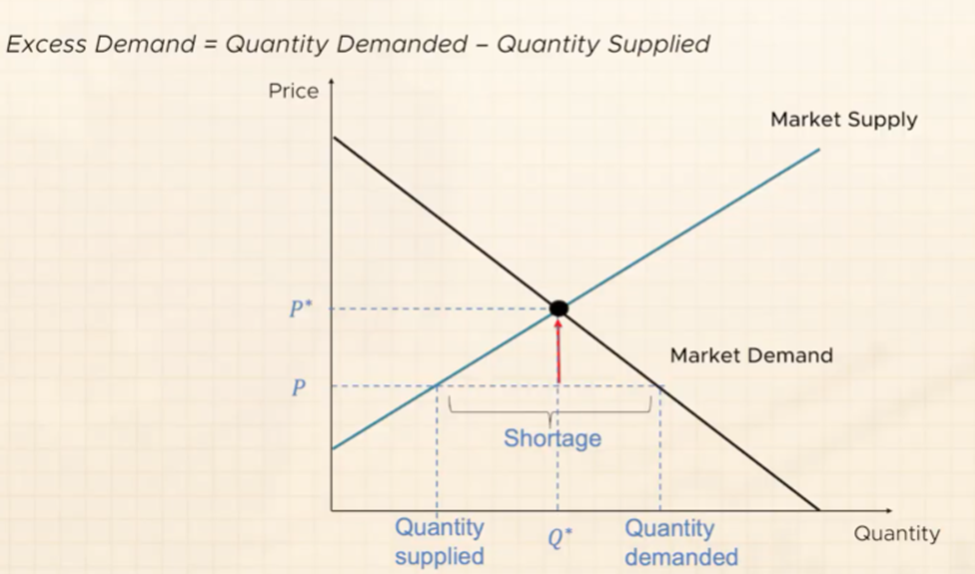Market Equilibrium
Market Equilibrium
Market equilibrium is a state in a market where the quantity of a good or service demanded by consumers equals the quantity supplied by producers. At this point, the market price is stable, and there is no tendency for it to change in the absence of external factors.
- Equilibrium Price: The price at which the quantity demanded equals the quantity supplied. Also known as the market-clearing price.
- Equilibrium Quantity: The quantity of a good or service that is bought and sold at the equilibrium price.
- Demand Curve: A graphical representation showing the relationship between the price of a good and the quantity consumers are willing and able to buy at different prices (slopes downward).
- Supply Curve: A graphical representation showing the relationship between the price of a good and the quantity producers are willing and able to sell at different prices (slopes upward).
- Intersection of Demand and Supply: The point where the demand and supply curves intersect determines the equilibrium price and quantity.
-
Disequilibrium: A situation where the quantity demanded is not equal to the quantity supplied.
- Shortage (Excess Demand): Occurs when the quantity demanded is greater than the quantity supplied at a given price (below equilibrium price). This leads to upward pressure on price.
- Surplus (Excess Supply): Occurs when the quantity supplied is greater than the quantity demanded at a given price (above equilibrium price). This leads to downward pressure on price.
- Changes in Equilibrium: Shifts in either the demand curve or the supply curve (due to factors other than price) will lead to a new equilibrium price and quantity.




No Comments